Home>Interior Design>How To Plan And Design The Screen Porch Of Your Dreams
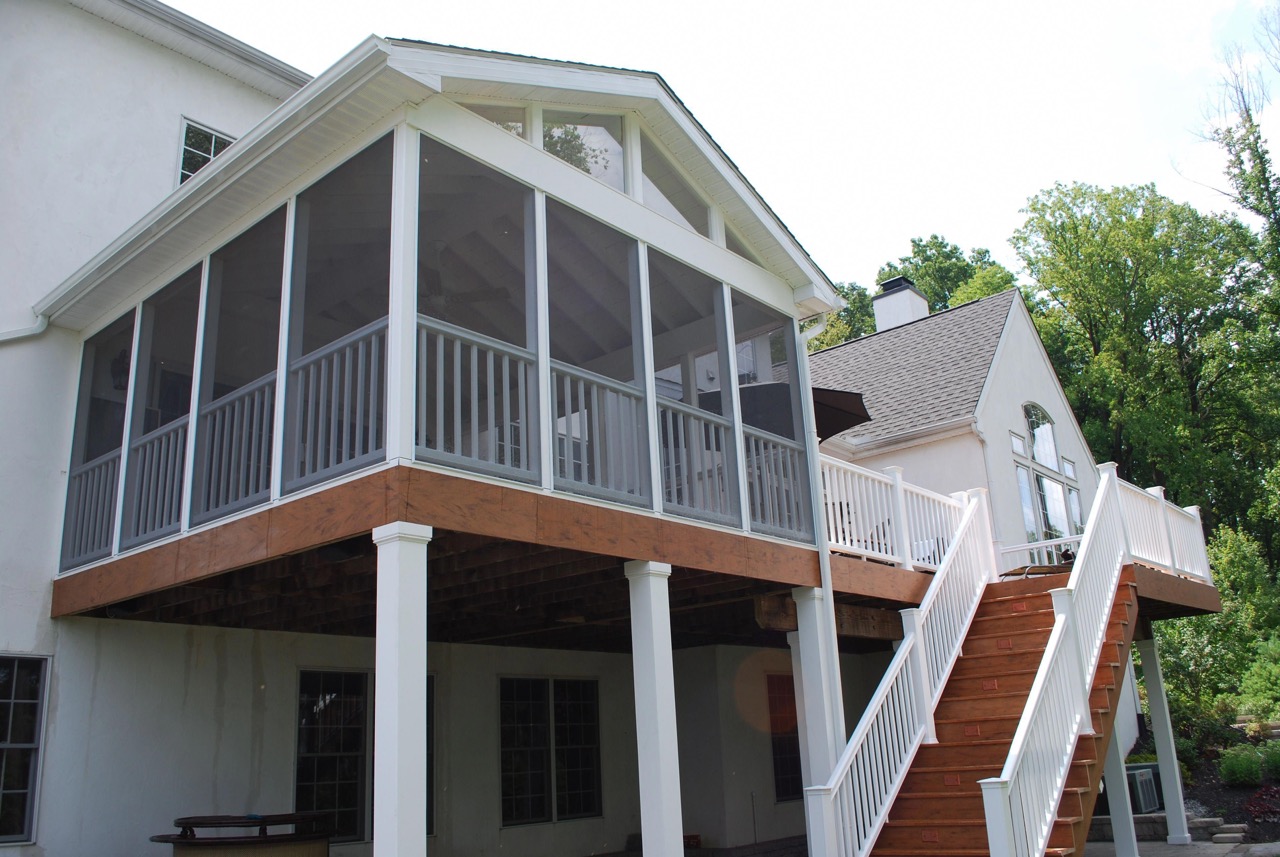

Interior Design
How To Plan And Design The Screen Porch Of Your Dreams
Modified: January 8, 2024
Learn how to plan and design the screen porch of your dreams with expert interior design tips. Create a beautiful and functional outdoor living space.
(Many of the links in this article redirect to a specific reviewed product. Your purchase of these products through affiliate links helps to generate commission for Storables.com, at no extra cost. Learn more)
Introduction
Welcome to the world of screen porches! If you are a fan of outdoor living and want to bring the beauty of nature into your home, then a screen porch is the perfect addition for you. A screen porch is a versatile and functional space that allows you to enjoy the outdoors without being fully exposed to the elements, insects, or unwanted guests. Whether you want to relax in a quiet corner, entertain guests, or create a cozy reading nook, a well-designed screen porch can fulfill all your desires.
However, planning and designing a screen porch requires careful consideration and attention to detail. From choosing the location and determining the size to selecting the materials and adding the right amenities, there are several factors to take into account. In this article, we will guide you through the process step by step, providing you with expert tips and advice to help you create the screen porch of your dreams.
Before we dive into the nitty-gritty details, it’s important to clarify a few initial considerations. First and foremost, check your local building codes and regulations to ensure that you are compliant with any necessary permits or restrictions. Additionally, consider the purpose of your screen porch. Are you looking to create an additional living space, a dining area, a place to unwind, or a combination of these? Understanding the primary use of your screen porch will help you make informed decisions along the way.
Now that we’ve covered the basics, let’s continue our journey towards planning and designing your screen porch masterpiece. So, grab a cup of coffee, sit back, and get ready to transform your outdoor space into a haven of comfort and relaxation!
Key Takeaways:
- Create a functional and stylish screen porch by prioritizing functionality, incorporating greenery, and considering long-term maintenance. Embrace versatility and energy efficiency to design a space that seamlessly integrates with your home and the surrounding environment.
- Whether hiring professionals or pursuing a DIY project, prioritize quality, set a realistic budget, and obtain necessary permits. Enjoy the process of designing your dream screen porch, infusing your personal style, and creating a welcoming outdoor oasis for relaxation and entertainment.
Read more: How To Screen In A Porch
Initial Considerations
Before you start designing your screen porch, there are a few important factors to consider. These initial considerations will help you set the foundation for your project and ensure that you make informed decisions along the way.
1. Purpose and Function: Determine the purpose of your screen porch. Are you looking to create an outdoor living room, a dining area, a place for relaxation, or a combination of these? Understanding the primary function of your screen porch will guide your design choices and help you create a space that meets your specific needs.
2. Building Codes and Permits: Check with your local building department to familiarize yourself with any codes or regulations that may apply to constructing a screen porch. Some areas have restrictions on height, setbacks, or materials that you can use. Obtaining the necessary permits will ensure that your project is legal and up to code.
3. Budget: Determine your budget for the project. This will help you make decisions about materials, size, and additional amenities. Keep in mind that a screen porch can add value to your home, so consider it as an investment in your property.
4. Climate and Location: Consider the climate in your area when designing your screen porch. If you live in a region with extreme temperatures, you may want to incorporate features like ceiling fans or heaters to make the space more comfortable year-round. Additionally, think about the location of your screen porch in relation to the sun and wind patterns, as this will impact the usability and enjoyment of the space.
5. Maintenance and Cleaning: Keep in mind that a screen porch requires regular maintenance and cleaning. Choose materials that are easy to clean and maintain, and consider factors like water drainage and debris accumulation when planning your design.
6. Style and Aesthetics: Think about the overall style and aesthetic you want to achieve with your screen porch. Consider the architectural style of your home and how you can seamlessly incorporate the screen porch into the existing design. You may also want to think about the colors, textures, and materials that will complement your outdoor space.
By taking these initial considerations into account, you will be well-prepared to move forward with planning and designing your screen porch. So, let’s continue on this journey and explore the next steps in creating the outdoor oasis of your dreams!
Choosing the Right Location
The location of your screen porch is crucial for its functionality and enjoyment. By choosing the right spot, you can maximize the benefits of natural light, views, and privacy. Here are some factors to consider when selecting the location for your screen porch:
1. Accessibility: Consider the accessibility of your screen porch. Choose a location that is easily accessible from your main living area or kitchen. This will ensure convenience and make it more likely that you will use and enjoy the space frequently.
2. Views: Take advantage of any scenic views your property may offer. Consider locating your screen porch where you can enjoy beautiful sunsets, lush landscapes, or a serene garden. Positioning your porch to capture these stunning views will greatly enhance your overall experience.
3. Privacy: Assess the level of privacy you desire for your screen porch. If you have a backyard that is surrounded by neighbors or facing a busy street, consider incorporating screens, landscaping, or curtains to create a secluded and intimate space.
4. Orientation: Pay attention to the orientation of your screen porch in relation to the sun. If you live in a hot climate, you may want to position your porch in a way that minimizes direct sunlight during the hottest parts of the day. On the other hand, if you enjoy sunlight and warmth, orienting the porch to face the south or west will allow for more exposure to natural light.
5. Existing Structures: Consider the existing structures on your property when choosing the location for your screen porch. Look for areas that will integrate well with your home’s architecture and won’t obstruct any important functional elements, such as windows or doorways.
6. Functionality: Determine how you plan to use your screen porch and choose a location that best suits that purpose. For example, if you plan to use it primarily for outdoor dining and entertaining, a location adjacent to the kitchen or dining area may be ideal. On the other hand, if you want a space for relaxation and quiet reflection, a more secluded location in the backyard might be preferable.
Taking these factors into consideration will help you narrow down the options and select the perfect location for your screen porch. Remember that every property is unique, so take the time to assess your specific needs and preferences. With the right location, you can create a screen porch that seamlessly integrates with your home and enhances your outdoor living experience.
Determining the Size and Layout
Once you’ve chosen the location for your screen porch, the next step is to determine the size and layout that will best suit your needs. Careful consideration of these factors will ensure that your screen porch is functional, comfortable, and aesthetically pleasing. Here’s how to go about it:
1. Assess Your Available Space: Measure the area where you plan to build your screen porch. Take into account any existing structures, such as decks or patios, and consider how the screen porch will fit into the overall layout of your outdoor space. This will give you a clear idea of the available space you have to work with.
2. Determine the Primary Use: Consider how you plan to use your screen porch. Do you envision it as a place for entertaining, outdoor dining, relaxation, or all of the above? Understanding the primary use will help you determine the size and layout that will best accommodate your desired activities.
3. Furniture and Traffic Flow: Think about the furniture you plan to incorporate into your screen porch and how it will be arranged. Ensure that there is enough space for comfortable seating, tables, and other necessary elements. Consider the flow of traffic within the porch and allow adequate space for easy movement between areas.
4. Screen Placement: Determine where the screens will be located on the walls of your porch. This will affect the overall layout and also the views and ventilation within the space. Consider how the placement of screens will optimize natural light and air circulation.
5. Additional Features: If you plan to include additional features in your screen porch, such as a fireplace, outdoor kitchen, or bar, make sure to allocate enough space for these elements. They may require specific dimensions and considerations in the overall layout.
6. Proportion and Scale: Keep in mind the proportion and scale of your screen porch in relation to your home and outdoor area. You want the porch to harmoniously blend with the existing architecture and surroundings. Avoid building a porch that is too large or too small for the space available.
7. Future Flexibility: Consider your future plans and how they may impact your screen porch. If you anticipate expanding or making changes in the future, plan accordingly to allow for future flexibility and modifications.
By carefully determining the size and layout of your screen porch, you can create a space that is functional, aesthetically pleasing, and tailored to your specific needs. Take your time to envision how you will utilize the space and consult with professionals if needed. With proper planning, your screen porch will become a cherished outdoor retreat for years to come.
Selecting the Materials
Choosing the right materials for your screen porch is crucial for its durability, aesthetics, and maintenance. The materials you select will not only impact the overall look of your porch but also its performance and longevity. Here are some key considerations when selecting materials for your screen porch:
1. Framing Materials: The framing of your screen porch provides the structure and support. Common options for framing materials include wood, aluminum, and vinyl. Wood is a popular choice for its natural beauty, but it may require more maintenance over time. Aluminum is durable and low-maintenance, while vinyl is known for its longevity and resistance to rot and insects.
2. Screen Materials: The type of screen you choose for your porch will determine its visibility, ventilation, and protection from insects. Options include traditional fiberglass screens, aluminum screens, and solar screens that provide sun control and UV protection. Consider factors such as durability, visibility, and the specific climate conditions in your area when selecting screen materials.
3. Flooring Materials: The flooring of your screen porch should be durable, weather-resistant, and visually appealing. Common options include pressure-treated wood, composite decking, concrete, and stone. Each option has its own advantages in terms of maintenance, appearance, and cost. Choose a flooring material that suits your style preferences, budget, and level of maintenance desired.
4. Ceiling Materials: The ceiling of your screen porch adds a finishing touch and can enhance the overall aesthetic appeal. Popular choices for porch ceilings include wood, beadboard, vinyl, and metal. Consider the style of your home and the desired look for your porch when selecting ceiling materials.
5. Trim and Accents: Pay attention to the details by selecting the right trim and accents for your screen porch. These small finishing touches can elevate the overall appearance and add character to the space. Options for trim and accents include wood moldings, PVC trims, decorative brackets, and architectural details.
6. Maintenance and Longevity: Consider the maintenance requirements and longevity of the materials you choose for your screen porch. Some materials may require regular sealing, staining, or painting, while others are more resistant to weathering and require minimal upkeep. Factor in your lifestyle, time commitment, and preferences when making decisions about maintenance.
7. Budget: Take into account your budget when selecting materials for your screen porch. Some materials may come with a higher price tag upfront but offer long-term cost savings due to their durability and low maintenance. Determine your priorities and allocate your budget accordingly.
By carefully evaluating these factors, you can select the materials that best suit your needs, budget, and overall design aesthetic. Don’t hesitate to consult with professionals, such as contractors or interior designers, who can provide valuable guidance and expertise in material selection.
Read more: What Is A Screened Porch
Roofing Options
The roofing of your screen porch not only protects you from the elements but also contributes to the overall aesthetic appeal of the space. When choosing the roofing material for your screen porch, consider factors such as durability, maintenance, style, and budget. Here are some popular roofing options to consider:
1. Traditional Shingles: Asphalt shingles are a common and cost-effective option for screen porch roofs. They are available in various colors and styles, allowing you to match them with the existing roofing of your home. Asphalt shingles are durable, low-maintenance, and provide reliable protection against rain and snow. However, keep in mind that traditional shingles may require periodic replacement over time.
2. Metal Roofing: Metal roofs, such as steel or aluminum, offer excellent durability and longevity. They are resistant to extreme weather conditions, fire, and insect damage. Metal roofs also have the advantage of being lightweight and can be installed over existing roofs. They are available in different finishes and colors, enabling you to achieve a sleek and modern look for your screen porch.
3. Polycarbonate Panels: Polycarbonate panels are a lightweight and versatile roofing option that allows natural light to filter through. They are often used in pergolas or sunrooms and can be applied to screen porches as well. They provide protection against UV rays and offer a unique aesthetic by creating a translucent roof that brightens up the space. However, it’s important to note that polycarbonate panels may not provide as much insulation as other roofing materials.
4. Thatched Roof: For those who desire a more exotic and natural look, thatched roofs can be a captivating option. Thatched roofing consists of dry vegetation, such as straw or reeds, woven together to create a waterproof and visually appealing covering. Thatched roofs require specialized installation and maintenance, as they need regular inspections and occasional repairs. They add a unique and rustic charm to your screen porch but may come at a higher cost.
5. Green Roof: If you have a passion for sustainability and a desire to incorporate nature into your screen porch, a green roof might be the perfect choice. Green roofs are covered with vegetation, which provides insulation, reduces stormwater runoff, and creates a visually appealing green landscape. However, green roofs require additional structural support to accommodate the added weight and ongoing maintenance to ensure proper growth and care of the plants.
6. Combination of Materials: Don’t be afraid to mix and match different roofing materials to achieve a unique and customized look. You can combine shingles with metal roofing accents or incorporate skylights for added natural light. Experimenting with different materials can help you create a screen porch that stands out and complements your home’s architecture.
Consider your personal preferences, maintenance requirements, and budget when selecting the roofing material for your screen porch. Remember, the right roof not only protects your space but also enhances its visual appeal and functionality.
Flooring Options
The flooring of your screen porch plays a crucial role in its overall aesthetics, comfort, and durability. Choosing the right flooring material will not only enhance the visual appeal of your space but also provide a surface that is easy to maintain and withstands outdoor conditions. Here are some popular flooring options to consider for your screen porch:
1. Pressure-Treated Wood: Pressure-treated wood is a common and affordable choice for screen porch flooring. It is durable, resistant to rot and insect damage, and can withstand outdoor conditions. Pressure-treated wood can be stained or painted to enhance its appearance and longevity. However, keep in mind that wood requires regular maintenance, such as sealing or staining, to preserve its color and protect it from the elements.
2. Composite Decking: Composite decking is an increasingly popular choice for outdoor flooring, including screen porches. It is made from a combination of recycled wood fibers and plastic, offering the look of wood without the maintenance. Composite decking is resistant to fading, staining, and rot, and it requires minimal upkeep. It comes in various colors and styles, allowing you to create a customized look for your porch.
3. Concrete: Concrete is a versatile and durable flooring option for screen porches. It can be poured and finished in different textures and patterns, giving you the freedom to create a custom design. Concrete is low-maintenance, easy to clean, and can withstand harsh weather conditions. You can also enhance the appearance of concrete by adding color or decorative finishes.
4. Porcelain Tile: Porcelain tile is a stylish and long-lasting option for screen porch flooring. It is resistant to moisture, stains, and fading, making it ideal for outdoor use. Porcelain tile comes in a wide variety of colors, patterns, and textures, allowing you to create a unique and visually appealing porch. The only consideration with tile is that it may be slippery when wet, so choose a textured or non-slip tile to ensure safety.
5. Natural Stone: Natural stone, such as flagstone or slate, can add a touch of elegance and sophistication to your screen porch. Natural stone is durable, resistant to heat and moisture, and provides a timeless look. Each stone has unique patterns, colors, and textures, giving your porch a one-of-a-kind appearance. However, natural stone can be more expensive and may require professional installation.
6. Outdoor Carpets or Rugs: If you prefer a softer and more comfortable flooring surface, consider using outdoor carpets or rugs on top of your chosen flooring material. Outdoor carpets are designed to withstand outdoor elements and are available in various colors and patterns. They can add warmth, texture, and style to your porch while providing a comfortable underfoot feel.
When selecting the flooring for your screen porch, consider your style preferences, maintenance requirements, and budget. Remember to choose a material that is suitable for outdoor use and can withstand the specific weather conditions in your area. By selecting the right flooring, you will create a beautiful and inviting space for relaxation and enjoyment.
Walls and Windows
The walls and windows of your screen porch are essential elements that contribute to its functionality, aesthetics, and comfort. They provide protection from the elements, enhance privacy, and allow you to enjoy the surrounding views. When designing your screen porch, consider the following factors when it comes to walls and windows:
1. Screen Options: The main purpose of a screen porch is to keep insects and debris out while allowing fresh air to flow in. Traditional fiberglass screens are a popular and cost-effective option. However, advancements in technology have introduced various types of screens, such as aluminum screens and solar screens, which provide additional benefits like improved visibility and sun control. Choose a screen material that suits your preferences and the specific climate in your area.
2. Window Selection: If you want more versatility and control over ventilation, consider incorporating windows into your screen porch design. Windows allow you to open or close them, providing additional airflow options and climate control. Popular window styles for screen porches include casement windows, sliding windows, and awning windows. Opt for windows that are easy to operate and maintain.
3. Sliding Glass Doors: Sliding glass doors are an excellent option if you desire a seamless transition between your indoor and outdoor space. These doors allow natural light to flood into your screen porch and provide easy access to your backyard or patio. Additionally, sliding glass doors offer expansive views and enhance the overall aesthetics of your porch.
4. Privacy Screens or Curtains: If privacy is a concern, consider incorporating privacy screens or curtains into your screen porch design. These options can be added to specific areas or sections of your porch to create secluded spaces. Privacy screens come in various materials and designs, such as lattice or bamboo, while curtains provide a softer and more customizable option.
5. Wall Finishes: Choose wall finishes that complement the style of your home and create a cohesive look for your screen porch. Options include wood paneling, shiplap, beadboard, or even stone veneer. These finishes can enhance the aesthetics of your porch and add warmth and texture to the space.
6. Considerations for Climate: When designing your screen porch, take the local climate into account. If you live in an area with cold winters, you may want to consider the option of adding removable panels or windows that can convert your porch into a three-season or four-season room. This will allow you to use the space comfortably during colder months as well.
When planning your screen porch, carefully consider the design and functionality of the walls and windows. These features will significantly impact the overall enjoyment of your porch and play a major role in creating a comfortable and versatile space for relaxation and entertainment.
Lighting and Electrical Considerations
Proper lighting and electrical considerations are essential for creating a functional and enjoyable screen porch. Whether you plan to use your porch during the day or in the evening, a well-designed lighting system and strategically placed electrical outlets will enhance the ambiance and convenience of your space. Here are some important considerations when it comes to lighting and electrical installations for your screen porch:
1. Natural Light: Take advantage of natural light by positioning your screen porch to receive maximum sunlight during the day. Consider the orientation of your porch and the placement of windows or skylights to optimize natural light. This will not only create a bright and inviting atmosphere but also help reduce the need for artificial lighting during daylight hours.
2. Ambient Lighting: Install ambient lighting to provide overall illumination and create a warm and inviting atmosphere in the evenings. Options for ambient lighting include overhead fixtures such as flush-mounted or semi-flush-mounted lights, pendant lights, or chandeliers. Choose fixtures that are suitable for outdoor use and complement the style of your porch.
3. Task Lighting: Incorporate task lighting in specific areas of your screen porch to provide focused illumination for activities such as reading, dining, or playing games. Task lighting can be achieved through table lamps, floor lamps, or wall-mounted lighting fixtures. Adjustable fixtures allow you to direct light where it is needed the most.
4. Accent Lighting: Add accent lighting to highlight architectural features, plants, or artwork within your screen porch. This can be achieved through the use of recessed lighting, wall sconces, or strip lights. Accent lighting creates a visual focal point and adds depth and dimension to your space.
5. Exterior Lighting: Consider installing exterior lighting around the perimeter of your screen porch to enhance safety, security, and aesthetics. This can include pathway lighting, wall-mounted fixtures, or landscape lighting. Exterior lighting not only adds visual appeal but also provides a well-lit environment for navigating around the porch during nighttime.
6. Electrical Outlets and Wiring: Determine the number and placement of electrical outlets based on your planned activities and furniture arrangements. Consider the need for outlets near seating areas, dining tables, and entertainment setups. Ensure that your porch is equipped with safe and weather-resistant wiring and electrical outlets.
7. Smart Lighting and Controls: Consider incorporating smart lighting systems or controls into your screen porch design. Smart lighting allows you to control and customize your lighting settings using your smartphone or voice-activated devices, providing convenience and energy efficiency.
8. Ceiling Fans and Outdoor Heaters: Consider installing ceiling fans or outdoor heaters in your screen porch for enhanced comfort throughout the year. Ceiling fans provide a gentle breeze during warmer months, while outdoor heaters extend the usability of your porch during colder seasons.
When planning the lighting and electrical considerations for your screen porch, consult with a licensed electrician to ensure proper installation and adherence to electrical codes. By carefully planning your lighting scheme and electrical layout, you can create a well-lit and functional screen porch that meets your needs and adds to the overall enjoyment of your outdoor living space.
When planning and designing your screen porch, consider the orientation of the sun to maximize natural light and airflow. This will help create a comfortable and inviting space for you to enjoy.
Read more: How To Fix A Screen Porch
Adding Furniture and Decor
The furniture and decor you choose for your screen porch play a crucial role in creating a comfortable and inviting space. They not only enhance the functionality of your porch but also allow you to showcase your personal style and create a cohesive look. When selecting furniture and decor for your screen porch, consider the following tips:
1. Determine the Purpose: Think about how you plan to use your screen porch and select furniture that aligns with its intended purpose. If you’re creating a space for relaxation and lounging, consider comfortable seating options such as plush sofas, chairs, and hammocks. For dining and entertaining, choose a table and chairs that are suitable for outdoor use and accommodate the number of guests you typically host.
2. Opt for Durable Materials: Since your screen porch is exposed to outdoor elements, choose furniture made from materials that can withstand weather conditions. Consider options such as resin wicker, wrought iron, teak, or aluminum, which are known for their durability and resistance to moisture and sunlight. Ensure that the cushions and upholstery are made from outdoor fabrics that are fade-resistant and easy to clean.
3. Create Comfortable Seating Areas: Arrange your furniture to create cozy and inviting seating areas within your screen porch. Group chairs and sofas around a central coffee table or fireplace to create a conversation area. Add outdoor pillows and throws to enhance comfort and make the space feel welcoming. Incorporate ottomans or poufs for added versatility and to provide additional seating or footrests.
4. Consider Storage Solutions: Make use of furniture pieces that double as storage. Look for benches with built-in storage compartments or coffee tables that have concealed storage space. This will help you keep your porch organized and clutter-free, allowing you to stow away items such as blankets, outdoor games, or cushions when not in use.
5. Personalize with Accessories: Add personality and style to your screen porch by incorporating accessories and decor items. Hang outdoor artwork or mirrors on the walls to create visual interest. Consider adding outdoor rugs to define different areas and add texture. Use plants and potted flowers to bring a touch of nature to your space. Don’t be afraid to express your creativity and add personal touches through decorative items that reflect your taste.
6. Create a Coordinated Look: Aim for a unified and coordinated look with your furniture and decor choices. Consider the overall color scheme and style of your porch and select furniture and accessories accordingly. Whether you prefer a contemporary, rustic, or coastal theme, choose items that complement each other and create a cohesive aesthetic.
7. Pay Attention to Lighting: Incorporate lighting fixtures that not only provide illumination but also add to the ambiance of your porch. Hang pendant lights or string lights to create a cozy and enchanting atmosphere in the evenings. Use lanterns or candleholders for a soft and warm glow. Lighting fixtures can serve as both functional and decorative elements in your screen porch design.
Remember, the furniture and decor you choose should reflect your personal style and create a welcoming environment that entices you and your guests to spend time in your screen porch. Take your time to select pieces that are not only comfortable and durable but also align with the overall design aesthetic of your porch.
Incorporating Amenities
In addition to comfortable seating and stylish decor, incorporating amenities into your screen porch will enhance the functionality and enjoyment of the space. Amenities can turn your porch into a versatile outdoor retreat that caters to your specific needs and preferences. Here are some popular amenities to consider for your screen porch:
1. Outdoor Kitchen: If you enjoy cooking and entertaining, consider installing an outdoor kitchen in your screen porch. Include a grill, countertop space, a sink, and storage for utensils and cookware. An outdoor kitchen allows you to prepare and enjoy meals while staying connected with your guests.
2. Fireplace or Fire Pit: Create a cozy and inviting atmosphere by incorporating a fireplace or fire pit into your porch design. Whether it’s a gas-powered fireplace or a wood-burning fire pit, having a heat source allows you to enjoy your porch during cooler seasons. Gather around the fire, toast marshmallows, and create lasting memories with family and friends.
3. Bar Area: Add a bar area or a beverage station to your screen porch to create a convenient and stylish space for serving drinks and hosting gatherings. Install a built-in bar with storage for glassware, a small refrigerator for chilling beverages, and a countertop for preparing drinks. Consider adding bar stools for comfortable seating.
4. Outdoor Television: If you’re a sports enthusiast or enjoy outdoor movie nights, consider installing an outdoor television on your screen porch. Look for models specifically designed for outdoor use, as they are built to withstand the elements. Create a dedicated entertainment area with comfortable seating and the necessary audiovisual equipment for an immersive experience.
5. Sound System: Enhance the ambiance of your screen porch with a sound system. Whether it’s a built-in system or portable Bluetooth speakers, having music playing creates a pleasant atmosphere for relaxation and entertainment. Make sure to choose speakers that are weather-resistant and suitable for outdoor use.
6. Outdoor Shower or Hot Tub: For the ultimate relaxation and luxury, consider incorporating an outdoor shower or hot tub into your screen porch design. An outdoor shower allows you to rinse off after a swim or enjoy a refreshing shower surrounded by nature. A hot tub provides a soothing and rejuvenating experience, allowing you to unwind and indulge in hydrotherapy.
7. Ceiling Fans: Install ceiling fans to enhance air circulation and provide a cool breeze during hot summer months. Ceiling fans not only improve comfort but also add a decorative element to your porch. Choose fans that match the style of your porch and ensure they are suitable for outdoor use.
When incorporating amenities into your screen porch, consider your lifestyle, preferences, and available space. Plan the layout accordingly to ensure that your amenities seamlessly integrate and enhance the functionality of your porch. Whether you’re seeking culinary delight, relaxation, or entertainment, incorporating amenities will take your screen porch to the next level of comfort and enjoyment.
Enhancing Privacy and ProtectionPrivacy and protection are important considerations when designing your screen porch, as they allow you to create a secluded and secure outdoor space. By incorporating elements that enhance privacy and protect against the elements, you can fully enjoy your screen porch without worrying about prying eyes or unfavorable weather conditions. Here are some effective ways to enhance privacy and protection:
1. Screens and Curtains: Screens are the primary means of keeping insects out while allowing airflow. Choose screens with a tighter mesh to prevent smaller insects from entering your porch. Additionally, consider installing curtains that can be drawn for added privacy when needed. Outdoor curtains come in various styles and materials, allowing you to choose options that match your design aesthetic while providing privacy.
2. Trellises and Lattice: Incorporate trellises or lattice panels along the sides of your screen porch to add privacy and create a sense of enclosure. These structures can be used to grow climbing plants, adding a touch of natural beauty and creating a green border around your porch. Consider using fast-growing vines such as clematis or jasmine for quicker coverage.
3. Fencing or Walls: If you desire more solid privacy and protection, consider adding fencing or walls to your screen porch design. Depending on your preferences, you can opt for natural materials like wood or bamboo for a rustic look, or choose synthetic materials like vinyl or composite for low-maintenance and durability.
4. Hedges and Shrubs: Planting hedges or shrubs around the perimeter of your porch can enhance privacy and create a natural barrier. Choose varieties that are fast-growing, dense, and suited to your climate. Keep in mind the height and spread of the plants to ensure they provide enough privacy when fully grown.
5. Outdoor Blinds or Shades: Install outdoor blinds or shades that can be raised or lowered, providing flexibility in privacy and shade control. These can be made of materials like bamboo, fabric, or synthetic materials that are designed to withstand outdoor conditions. Outdoor blinds and shades offer the advantage of adjusting the amount of light and privacy desired throughout the day.
6. Outdoor Rugs or Flooring: Choose flooring materials or outdoor rugs that provide added privacy by blocking the view from below. This is especially beneficial if your screen porch is elevated or if you have a space underneath that you want to conceal. Opt for materials like composite decking, solid flooring, or rugs with a dense weave to achieve this effect.
7. Weather Protection: Extend the usability of your screen porch by adding elements that protect against unfavorable weather conditions. Install a roof or an awning to shield your porch from rain or direct sunlight. Consider installing outdoor curtains or shades that can be pulled down to block wind and offer additional protection.
By incorporating these privacy and protection features into your screen porch design, you can create a tranquil and secure outdoor space. Consider your specific needs and preferences when selecting the options that best suit your lifestyle and desired level of privacy. With the right elements in place, you can fully enjoy your screen porch in peace and comfort.
Hiring Professionals vs. DIY
When it comes to planning and designing your screen porch, you may be faced with the decision of whether to hire professionals or take on the project as a DIY endeavor. Both options have their advantages and considerations, and it’s important to weigh the factors to determine which approach is best for you. Here are some points to consider when deciding between hiring professionals and pursuing a DIY project:
1. Expertise and Experience: Professionals bring valuable expertise and experience to the table. They have the knowledge and skills to navigate through the design, permitting, and construction process smoothly. They are familiar with local building codes and regulations, ensuring compliance and a successful outcome. If you’re unsure about certain aspects or lack experience in construction, hiring professionals can provide peace of mind and ensure quality results.
2. Time and Convenience: Undertaking a DIY project requires a significant investment of time and effort. You’ll need to research, plan, source materials, and dedicate time to construction. Professionals, on the other hand, have the resources and know-how to efficiently handle the project, saving you time and allowing you to focus on other priorities. They’ll take care of the details, from acquiring permits to managing the construction process, making the entire experience more convenient for you.
3. Design Expertise: Professionals can bring a wealth of design expertise to your screen porch project. They can assist with space planning, recommending layouts and solutions that optimize functionality, aesthetics, and flow. Their experience with different styles and materials can help you achieve a well-executed design that aligns with your vision and complements your home’s architecture.
4. Quality of Work: Professionals are trained in their respective fields and have the knowledge and skills to deliver high-quality workmanship. They will ensure that your screen porch is built to code, meets safety standards, and is constructed with precise attention to detail. Their expertise will result in a durable and long-lasting porch that adds value to your home.
5. Cost Considerations: The cost of hiring professionals versus tackling a DIY project can vary. While DIY projects may seem more budget-friendly upfront, costs can quickly add up if mistakes are made or if you lack experience in certain areas. Professionals have access to industry discounts, specialized tools, and resources, which can potentially save you money in the long run. They are also equipped to handle unexpected challenges that may arise during construction.
6. Personalization and Satisfaction: DIY projects offer the opportunity for a more hands-on approach, allowing you to personalize every aspect of your screen porch. You have full control over the design and can make changes as desired. Embarking on a DIY project can also be personally rewarding, giving you a sense of accomplishment and satisfaction as you see your vision come to life. However, it’s important to carefully consider your skill level, available time, and access to necessary tools and resources.
Ultimately, the decision between hiring professionals and pursuing a DIY screen porch project depends on your comfort level, budget, time constraints, and skill set. If you have the necessary expertise, time, and resources, a DIY project may be a fulfilling option. However, if you’re seeking professional results, quality workmanship, and a seamless process, hiring professionals is the way to go. Assess your priorities and resources to make the best decision for your specific needs and goals.
Read more: How To Build Screens For A Porch
Obtaining Necessary Permits
Obtaining the necessary permits is a crucial step in the process of planning and constructing a screen porch. Permits are required to ensure that your project meets safety standards, zoning regulations, and building codes set by your local government. Here are some important points to consider when it comes to obtaining permits:
1. Research Local Regulations: Start by researching the specific permit requirements and regulations in your area. Contact your local building department or visit their website to understand what permits are needed for constructing a screen porch. Familiarize yourself with setback requirements, height limitations, and any other restrictions that may apply.
2. Consult with Professionals: If you’re unsure about which permits are necessary or how to navigate the permit process, consult with professionals such as architects, contractors, or even permit expediter services. They can guide you through the specific requirements in your area and ensure that all necessary permits are obtained.
3. Prepare Documentation: Be prepared to provide specific documentation for your permit application. This may include detailed drawings or plans of your screen porch, including dimensions, building materials, and structural details. You may also need to submit details about the electrical and plumbing work involved. Make sure your documentation is accurate, complete, and up to code.
4. Fill Out the Permit Application: Fill out the permit application form provided by your local building department. Ensure that all required information is provided, and double-check for any additional documents or fees that may be required. Pay attention to any specific deadlines or review processes outlined by the department.
5. Submit the Application: Submit your completed permit application and associated documents to the appropriate department. Ensure that you have included all required fees and any additional supporting documentation. Follow their submission guidelines to avoid delays or complications in the process.
6. Allow for Processing Time: Permit processing times can vary depending on the complexity of your project and the workload of the building department. Be prepared for some waiting time before your permit application is approved. During this time, it’s important to refrain from starting any construction until you receive the necessary permits.
7. Schedule Inspections: After you receive your permits, the building department will likely require inspections at specific stages of the construction process. It’s important to schedule these inspections in a timely manner to ensure that your project meets all necessary standards and regulations. Be prepared to make any required modifications or corrections based on the inspector’s recommendations.
8. Keep Permits on Site: Once you receive your permits, keep them in a safe and easily accessible location on the construction site. Inspectors may request to see the permits during their site visits, and it’s important to have them readily available for review.
Remember that obtaining permits is a legal requirement and an essential step in building your screen porch. Failing to obtain the necessary permits can result in fines, delays, or even the need to demolish the structure. By following the proper permit process, you ensure that your screen porch is built safely and in compliance with local regulations.
Setting a Budget
Setting a budget is an important step in planning and designing your dream screen porch. A well-defined budget helps guide your decisions, ensures that you allocate funds appropriately, and prevents overspending. Here are some key factors to consider when setting your budget:
1. Define Your Priorities: Start by identifying your priorities for your screen porch project. Determine which features, amenities, and design elements are most important to you. This will help you allocate your budget accordingly and ensure that your must-haves are accounted for.
2. Research Costs: Conduct thorough research to understand the costs associated with building a screen porch. Consider factors such as materials, labor, permits, and any additional features or amenities you wish to incorporate. Obtain quotes from contractors or suppliers to get a better understanding of the costs involved.
3. Plan for Contingency: It’s important to set aside a contingency fund in your budget to account for unforeseen expenses or changes that may arise during construction. It’s common to allocate around 10% to 20% of your total budget as a contingency to ensure you have financial flexibility.
4. DIY vs. Hiring Professionals: Consider whether you plan to take the DIY route or hire professionals for your screen porch project. While DIY projects often save on labor costs, they require a significant investment of time and may require additional tools or equipment. Hiring professionals may involve higher upfront costs but can ensure quality workmanship and a smoother construction process.
5. Material Selection: The materials you choose for your screen porch can greatly impact your budget. Research different material options and their associated costs to find a balance between aesthetics, durability, and affordability. Keep in mind that more expensive materials may offer long-term cost savings due to their durability and low maintenance requirements.
6. Factor in Extras: Consider any additional features or amenities you wish to incorporate into your screen porch, such as outdoor kitchens, fireplaces, or built-in seating. These extras can significantly impact your budget, so make sure to account for them when setting your financial plan.
7. Obtain Multiple Quotes: When working with contractors or suppliers, obtain multiple quotes to compare prices and services. This will help you ensure that you’re getting the best value for your money and allow you to make informed decisions about who to work with.
8. Keep Maintenance Costs in Mind: While initial construction costs are important, it’s also crucial to consider ongoing maintenance and upkeep expenses when setting your budget. Some materials or designs may require more frequent maintenance or replacement, which can add additional long-term costs.
9. Prioritize Quality: While it can be tempting to choose the most affordable options, prioritize quality when making decisions about materials, labor, and furnishings. Investing in high-quality products and workmanship can ensure the longevity and value of your screen porch in the long run.
By carefully considering these factors and setting a realistic budget, you can enjoy the process of creating your screen porch while staying within your financial means. Remember to allow room for flexibility and be prepared to adjust your budget as necessary throughout the planning and construction phases.
Final Thoughts and Tips
As you embark on the journey of planning and designing your screen porch, here are some final thoughts and tips to consider:
1. Prioritize Functionality: While aesthetics are important, prioritize functionality when designing your screen porch. Consider how you will use the space and make design decisions that align with your needs and preferences.
2. Seek Inspiration: Take the time to gather inspiration from various sources, such as magazines, websites, or even visiting other screen porches in your neighborhood. This will help you refine your vision and make informed decisions about the design elements you desire.
3. Consider Long-Term Maintenance: When selecting materials and features, think about the long-term maintenance requirements. Choose options that align with your maintenance preferences and ensure that you can commit to the necessary upkeep.
4. Plan for Proper Ventilation: Proper ventilation is crucial in a screen porch to maintain comfort and air quality. Consider incorporating ceiling fans, operable windows, or vents to ensure adequate airflow.
5. Incorporate Greenery: To create a natural and inviting atmosphere, add plants and landscaping around your screen porch. This will enhance the connection with the outdoors and create a soothing ambiance.
6. Embrace Versatility: Design your screen porch to be versatile and adaptable to various activities and seasons. Incorporate elements like removable panels, portable furniture, or adjustable lighting to create a space that can easily transform to meet your changing needs.
7. Consider Energy Efficiency: Incorporate energy-efficient features such as solar shades, LED lighting, or energy-efficient windows to reduce your environmental impact and lower utility bills.
8. Don’t Forget About Storage: Plan for storage solutions within your screen porch design. This will help you keep the space organized and free from clutter. Consider built-in benches, cabinets, or storage ottomans to maximize storage capacity.
9. Be Mindful of Surrounding Environment: Consider how your screen porch integrates with the surrounding environment. Ensure that the design harmonizes with the architectural style of your home and the natural landscape.
10. Enjoy the Process: Above all, enjoy the process of planning and designing your screen porch. It’s an opportunity to create a space that brings you joy, relaxation, and a connection to the outdoors. Embrace the journey and delight in your newfound outdoor oasis.
With these final thoughts and tips, you’re well-equipped to embark on the exciting venture of planning and designing your dream screen porch. Embrace the process, take your time, and create a space that reflects your style and enhances your outdoor living experience. Happy designing!
Conclusion
Designing a screen porch is an exciting project that allows you to extend your living space into the great outdoors. From the initial considerations and choosing the right location to selecting materials, incorporating amenities, and enhancing privacy, every step in the process plays a pivotal role in creating a functional and visually appealing space.
By carefully planning and considering factors such as budget, expertise, and personal preferences, you can ensure that your screen porch is not only a beautiful addition to your home but also a sanctuary where you can relax, entertain, and connect with nature.
Remember to seek inspiration, consult professionals when needed, and prioritize functionality and comfort in your design choices. Whether you hire professionals or embark on a DIY project, make sure to obtain the necessary permits and adhere to local regulations to ensure a safe and compliant construction process.
Lastly, don’t forget to infuse your own personal style and make the space truly unique to you. Select furniture and decor that reflect your taste, incorporate amenities that cater to your lifestyle, and create a welcoming and inviting atmosphere that you and your loved ones will enjoy for years to come.
With careful planning, attention to detail, and a touch of creativity, your screen porch will become a cherished retreat, offering a seamless blend of indoor comforts and outdoor beauty.
So, let the journey begin. Embrace the excitement of designing your dream screen porch and relish in the joy of transforming your outdoor space into a haven of relaxation and enjoyment. Your dream screen porch awaits!
Frequently Asked Questions about How To Plan And Design The Screen Porch Of Your Dreams
Was this page helpful?
At Storables.com, we guarantee accurate and reliable information. Our content, validated by Expert Board Contributors, is crafted following stringent Editorial Policies. We're committed to providing you with well-researched, expert-backed insights for all your informational needs.
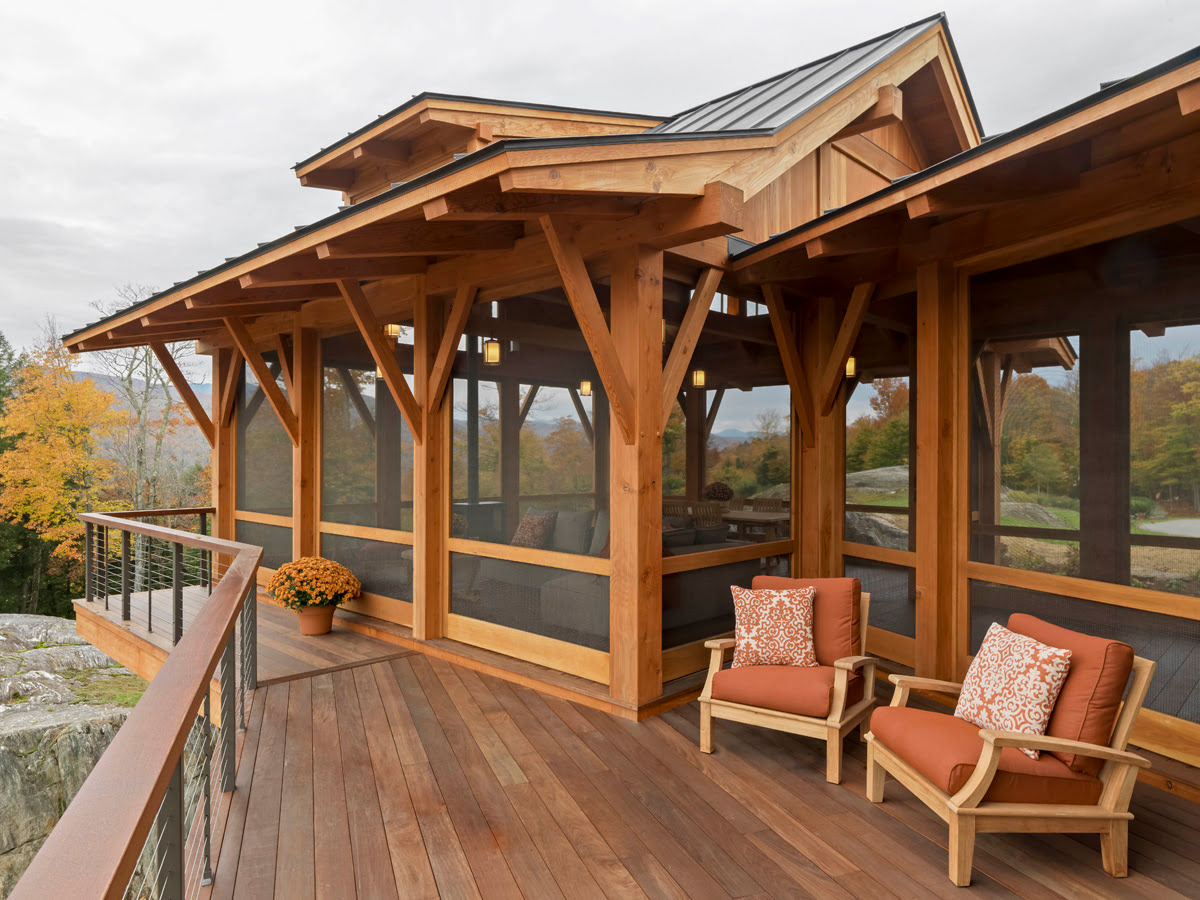
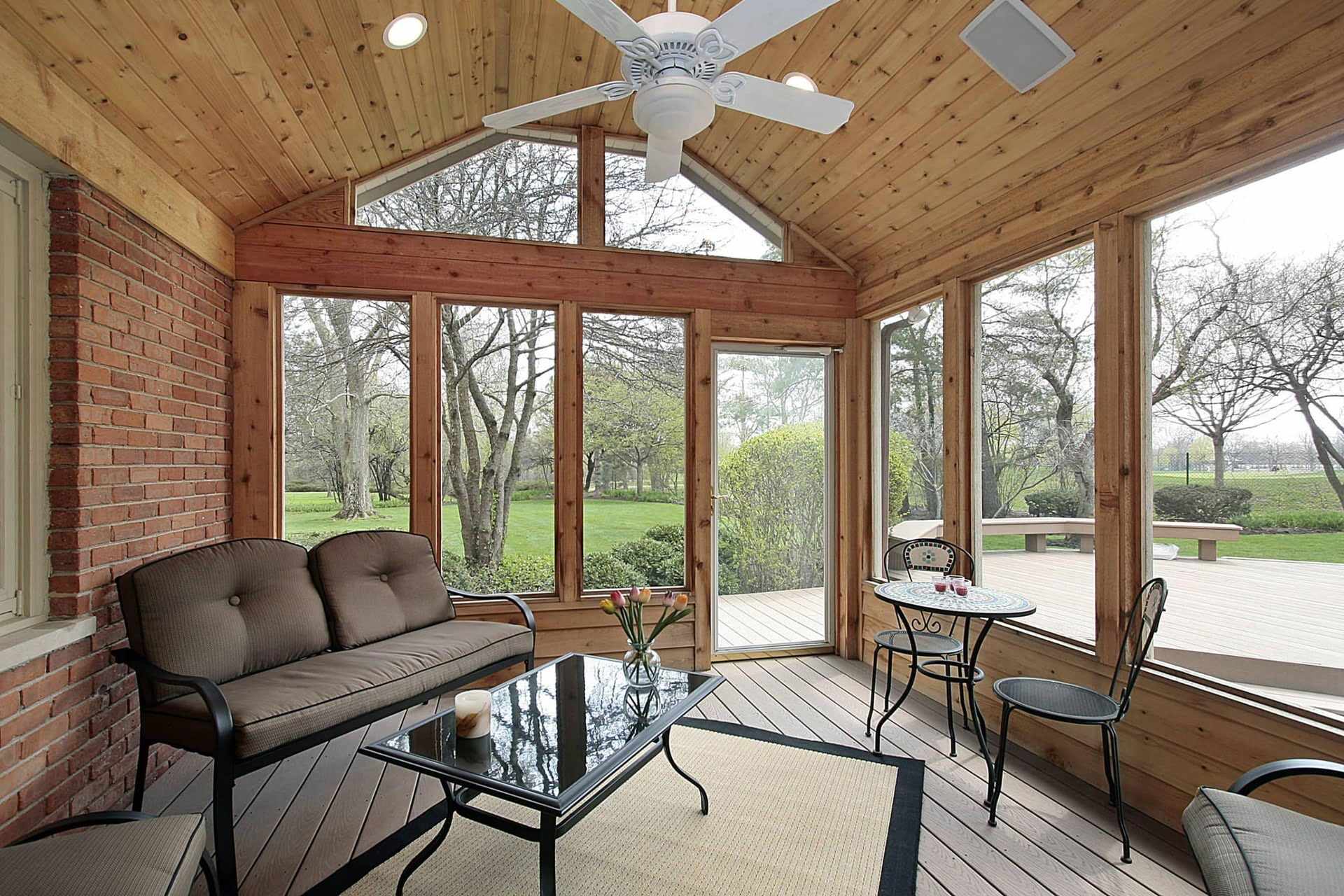
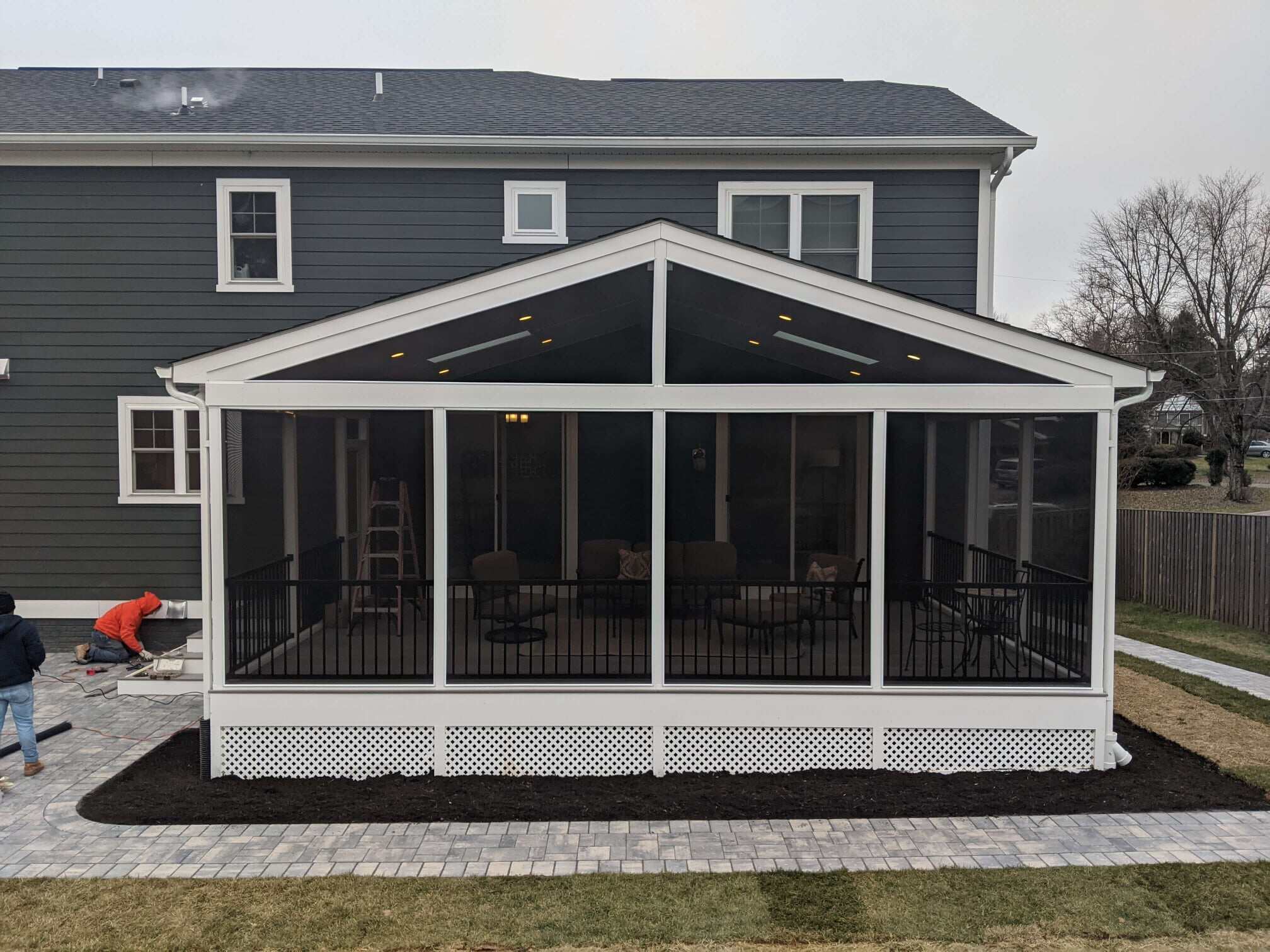
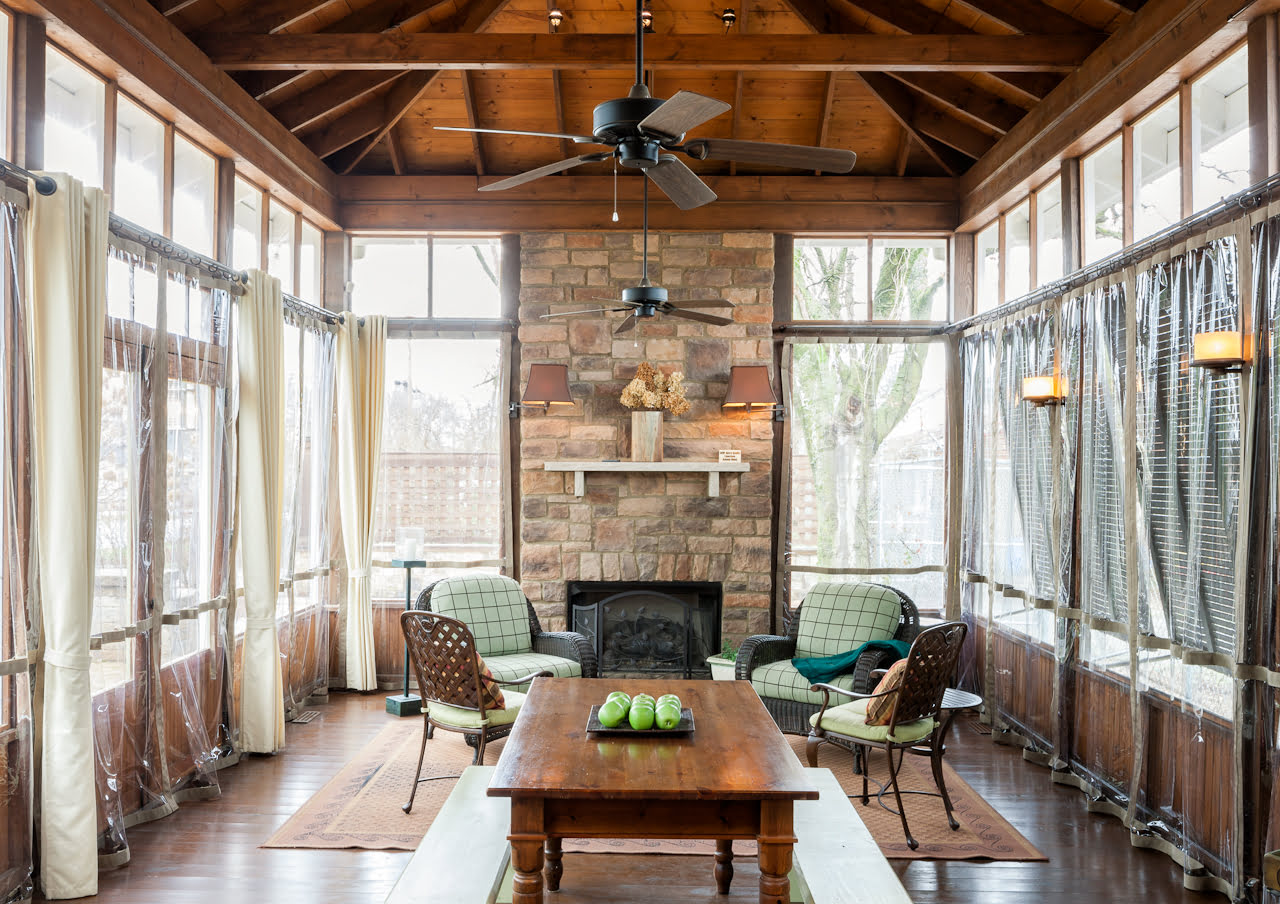
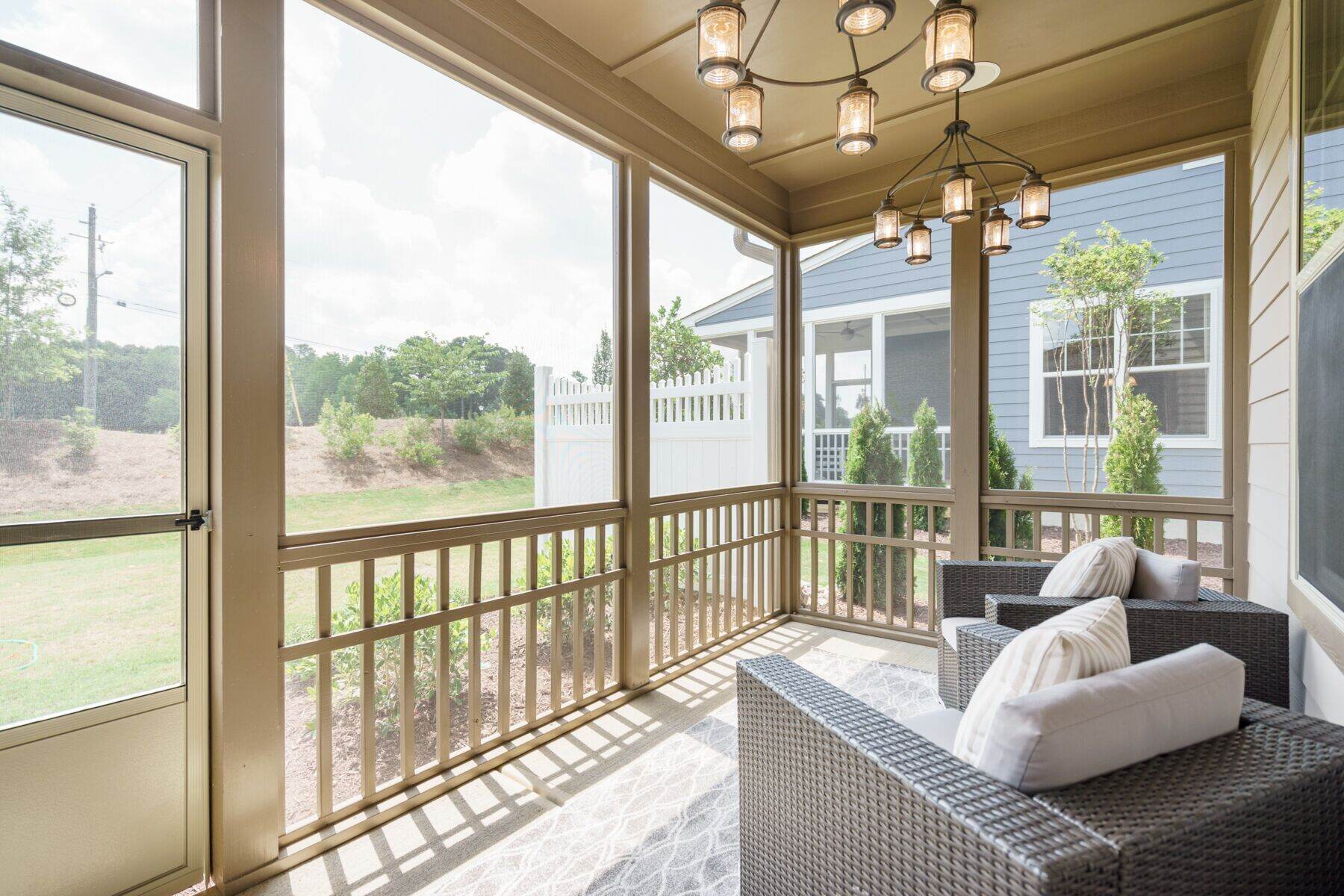
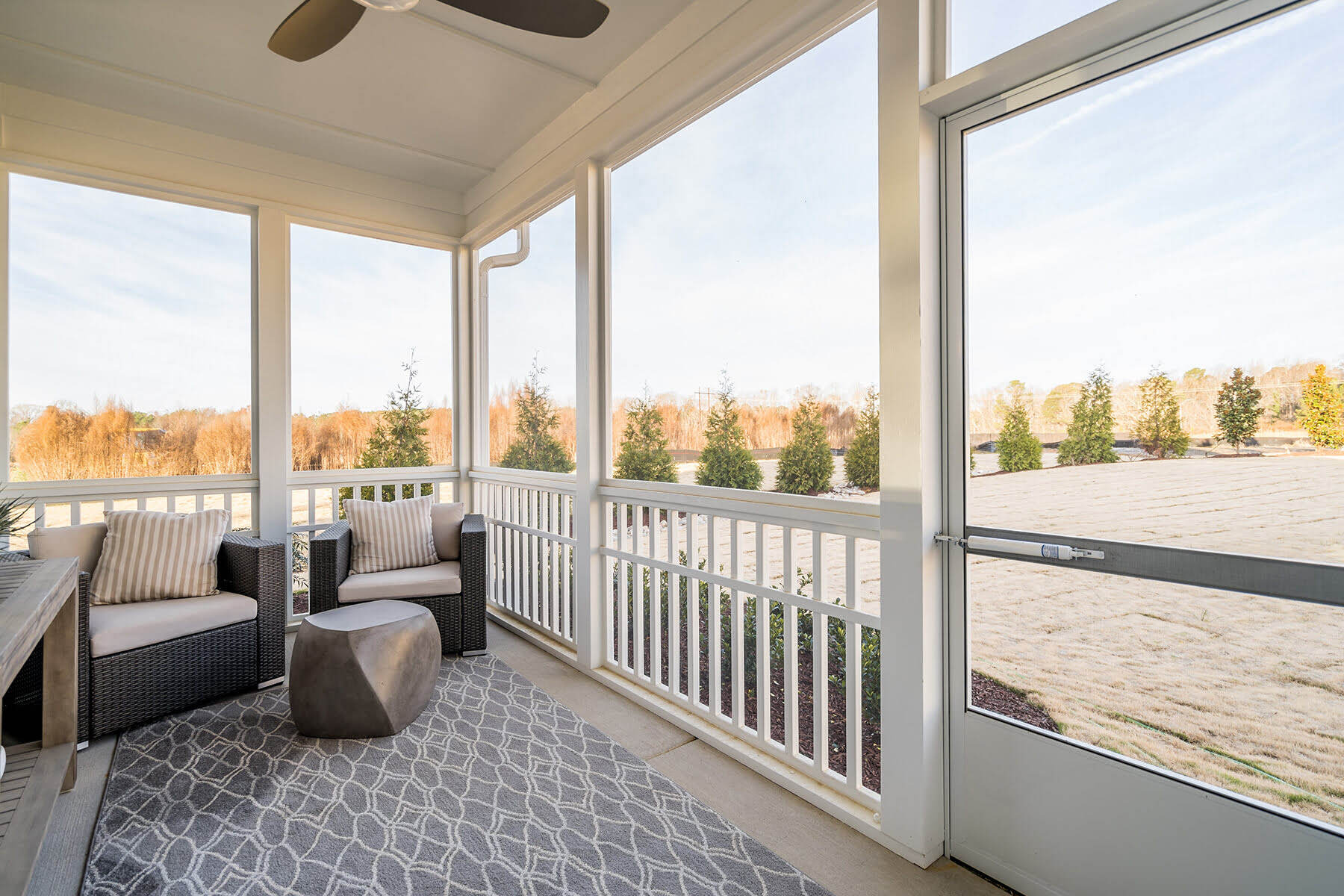
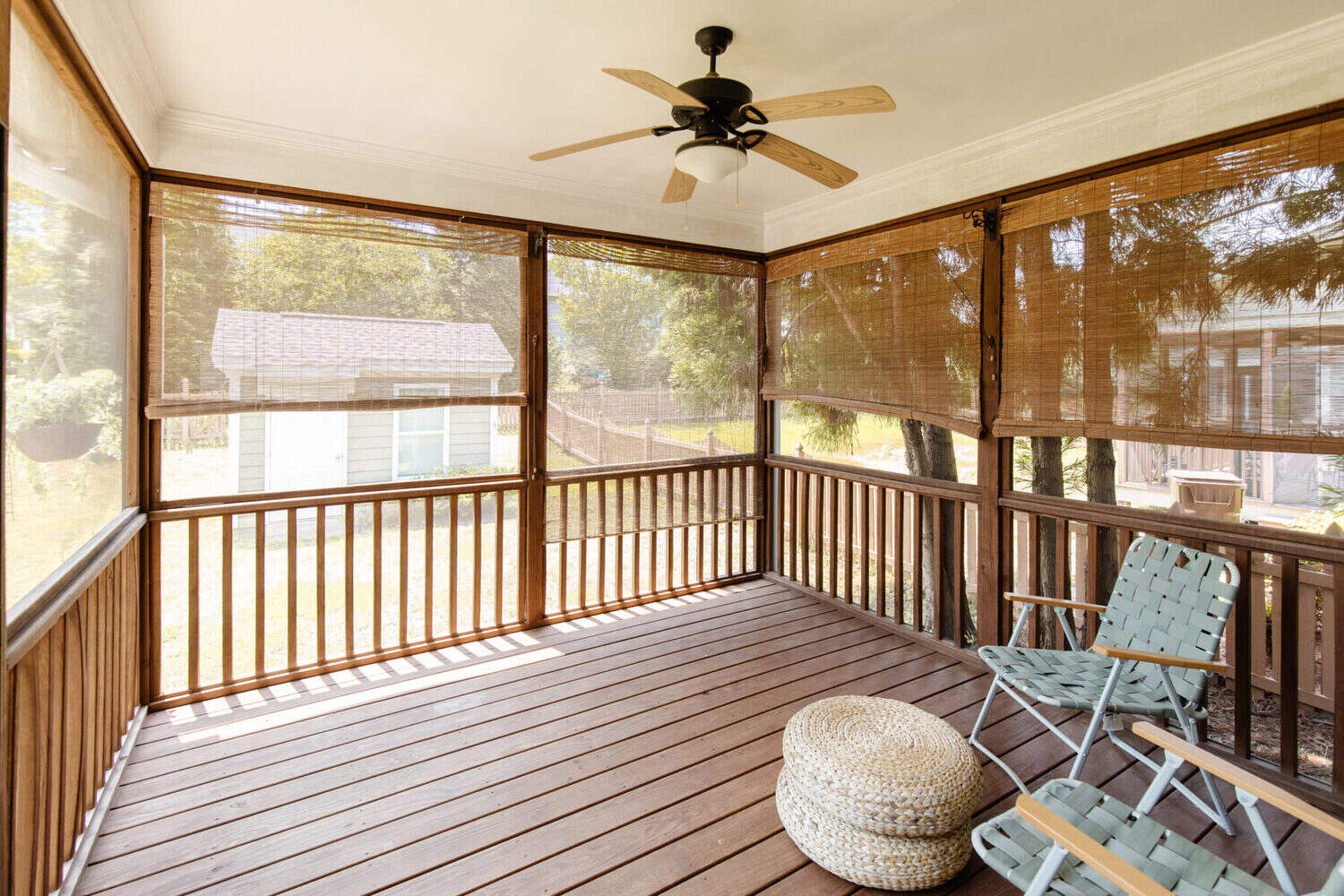

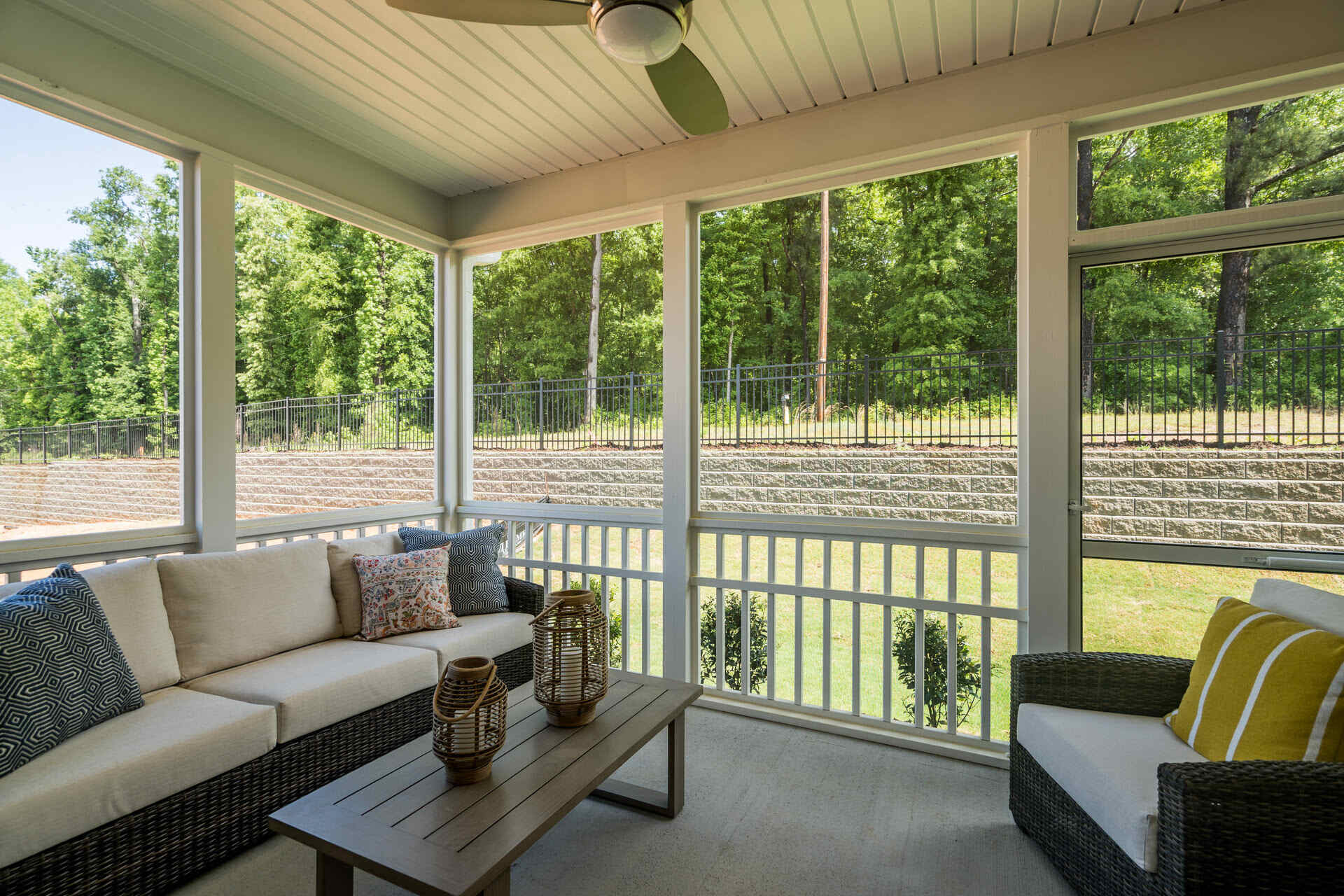
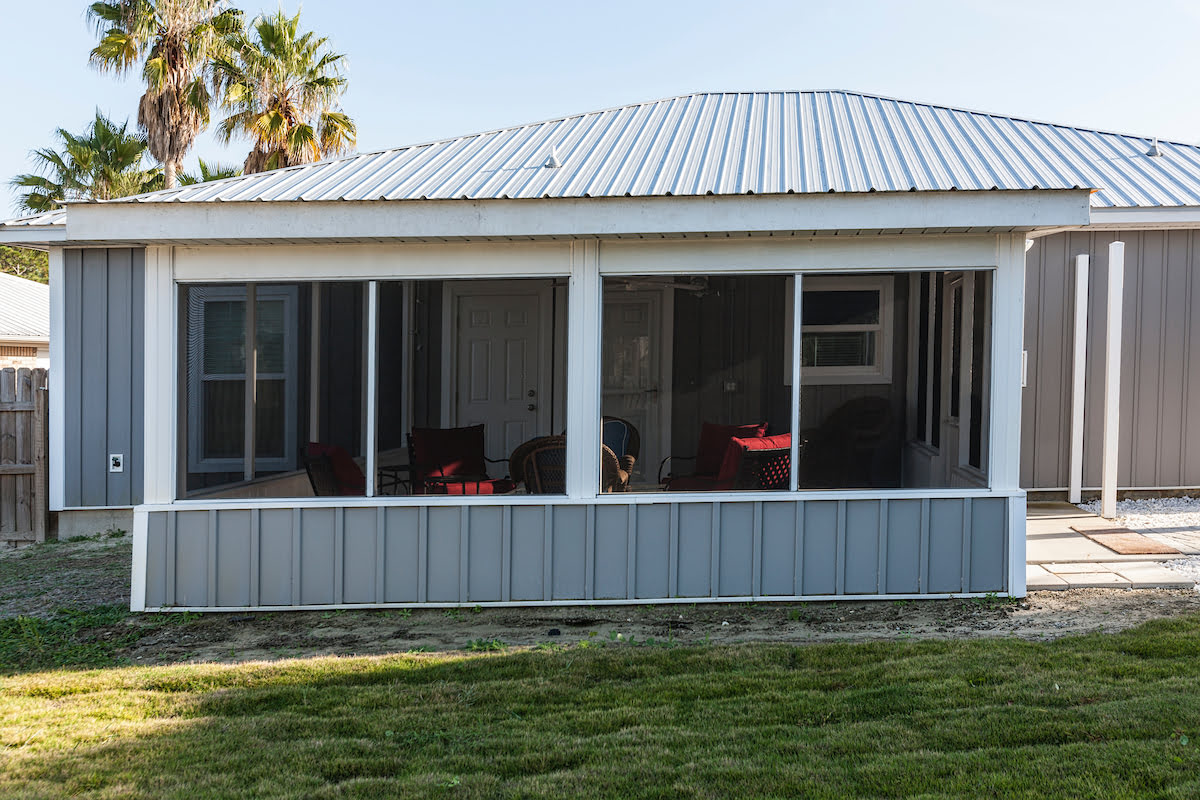
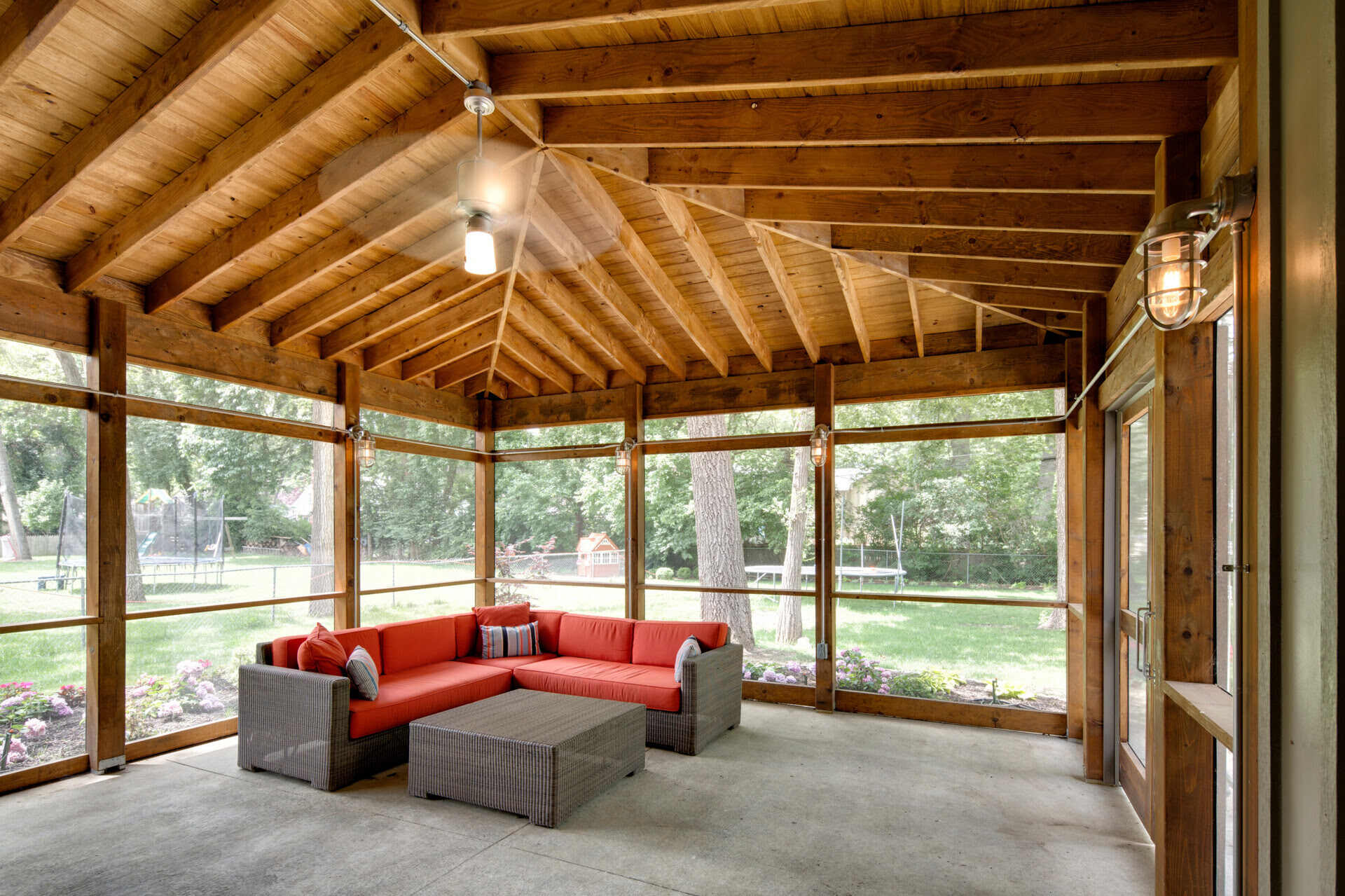
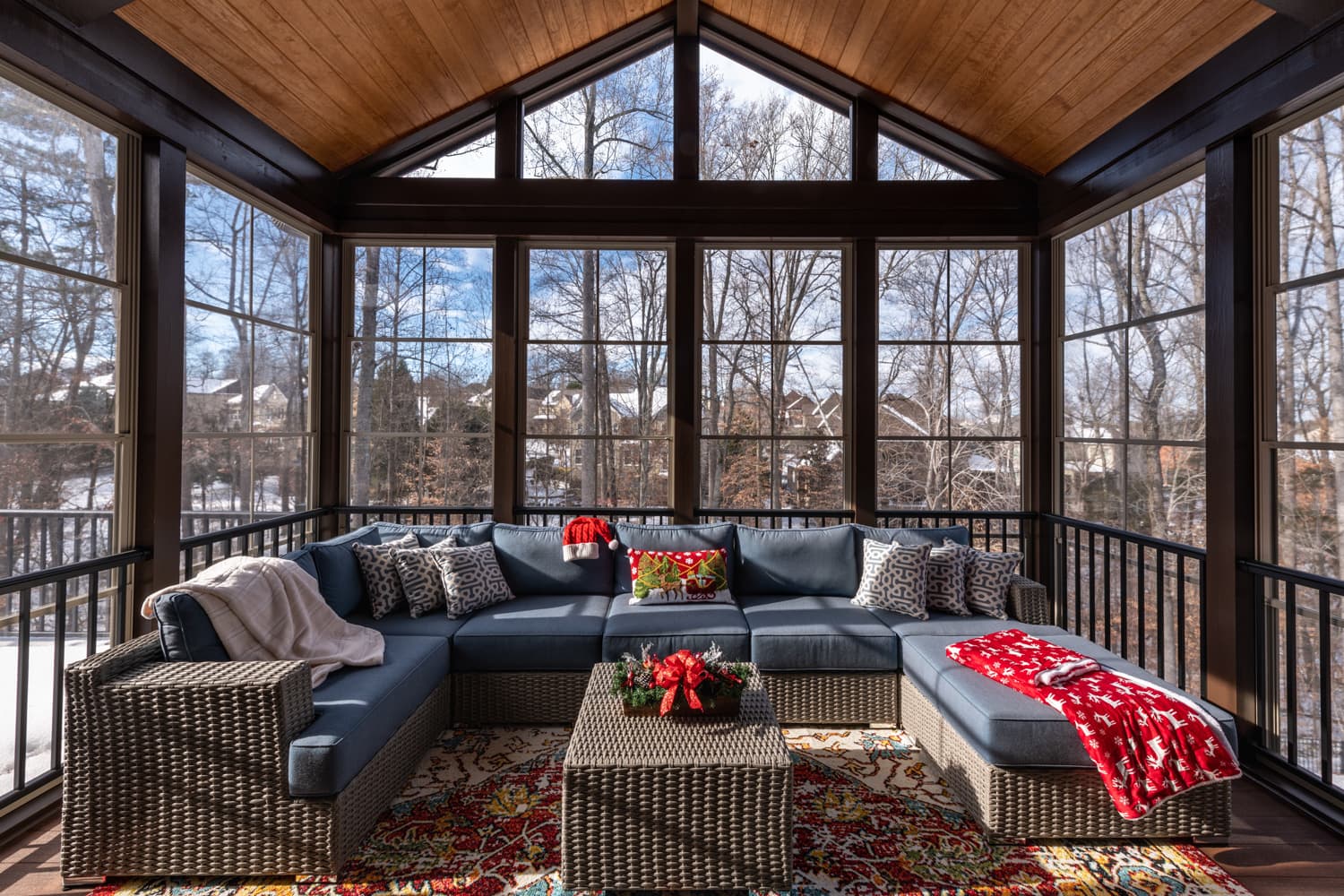

0 thoughts on “How To Plan And Design The Screen Porch Of Your Dreams”